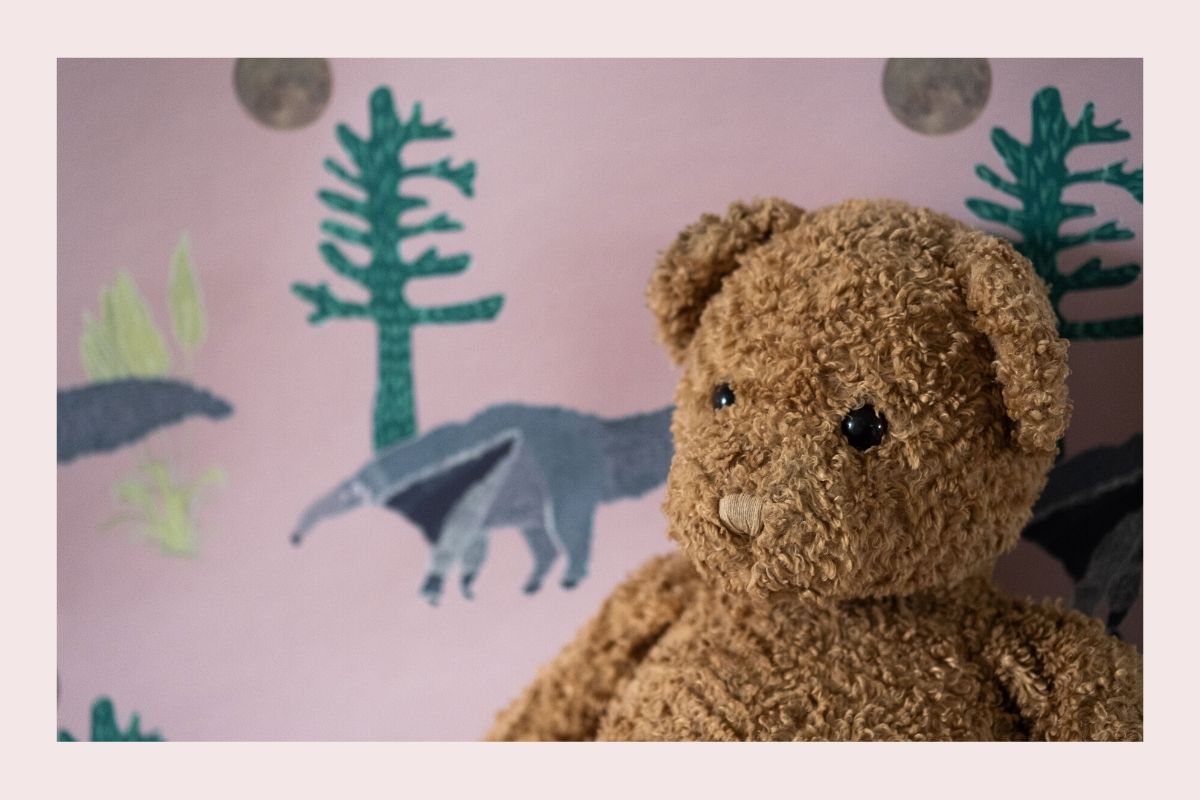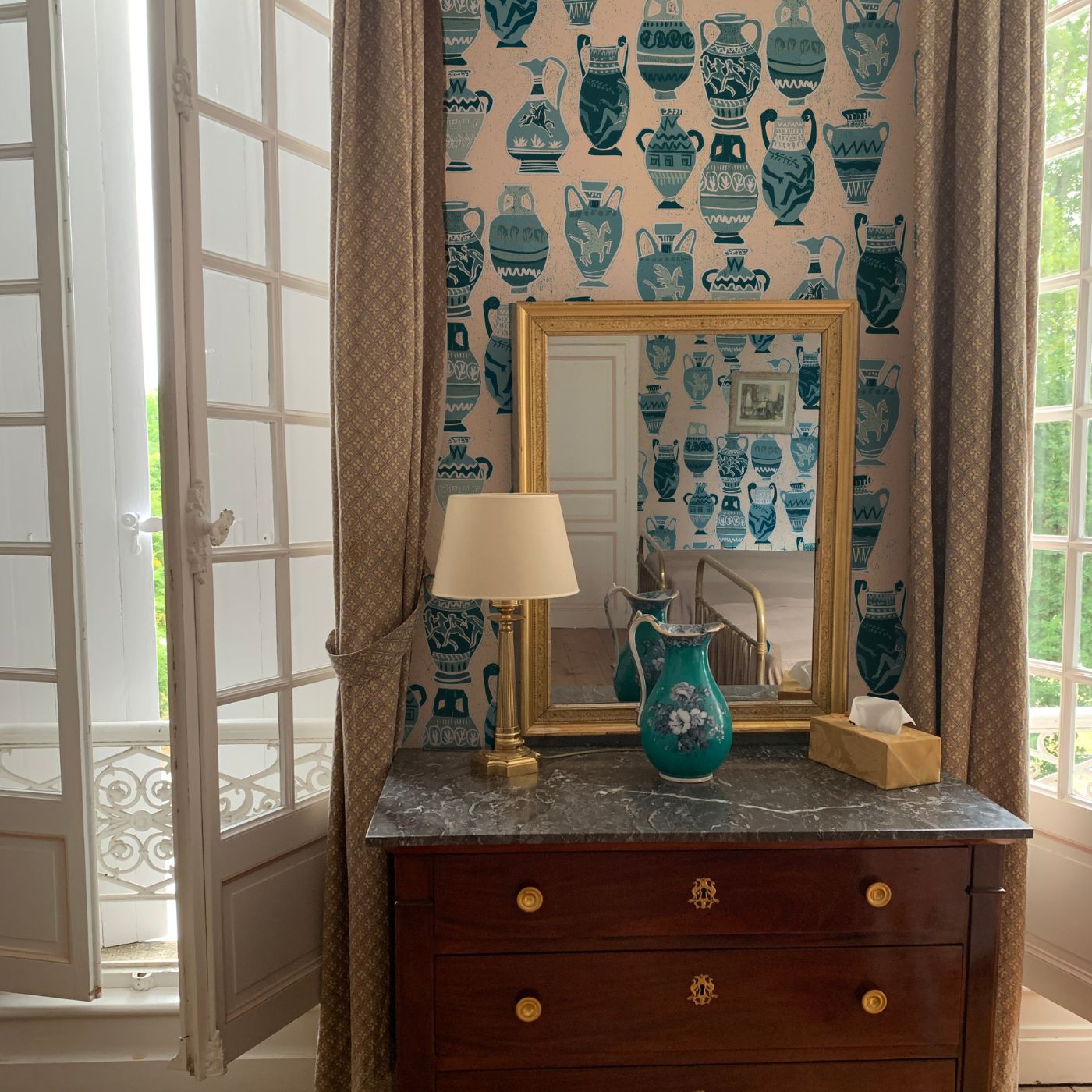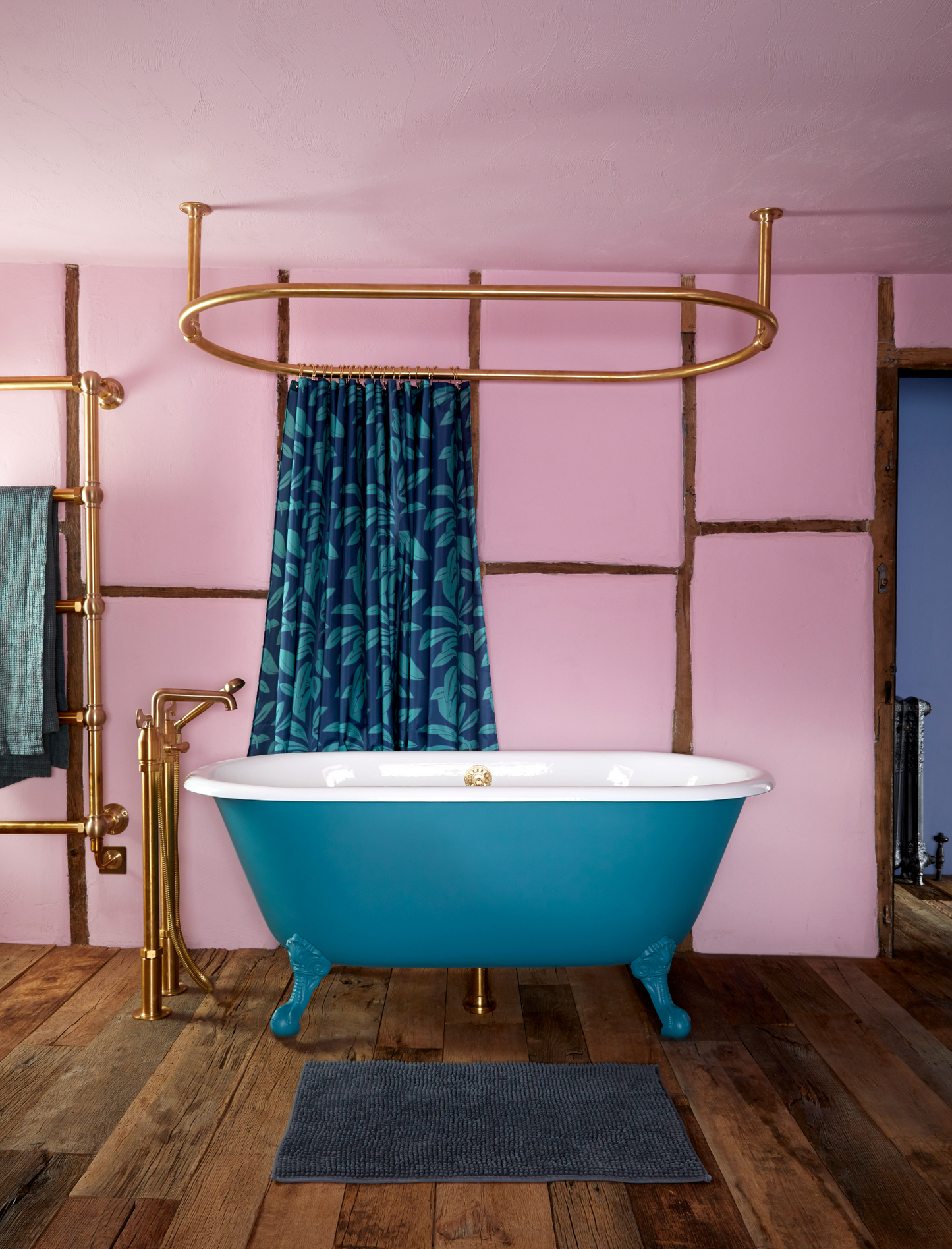

There are lots of websites promoting mental health ‘wallpapers’ for phones & computers. Whilst this might be useful on one hand, it seems slightly counterintuitive on the other, given it’s widely accepted that the proliferation of digital screens and over-stimulation in our lives has contributed greatly to an increase in mental health problems, including in children. So perhaps a better angle is to move beyond the screen entirely and to consider the effect of interiors and real-life wallpaper on mental health and wellbeing.
This is not a new area of research, our environment and its effect on wellbeing has always been a key consideration of interior design. However, it's an area that’s gaining traction outside of the art and design worlds too, and the desire to counteract the chaos and overstimulation of contemporary life has led to more resources and importance being placed on the design of our immediate environments. Interior design in hospitals, for example, is an area of increased consideration, with research showing strong links between design, colour and mental & physical health.
The bedroom should ultimately be a haven and a safe space. As Carolyn Feder from Sensory Interior Design says, children’s bedrooms should be “...a space they love spending time in, where they feel safe as they drift off to sleep, and comforted by what they see when they wake up in the morning.”
There are a few different things to consider when decorating a child’s bedroom in order to create a soothing and safe space. The idea of bringing the outside in is a popular concept in interior design - replicating patterns and forms found in nature can induce calmness and serenity, especially when the vast majority of the population live in cities with limited green space. Using motifs such as trees, leaves, plants, planets and animals, not only brings to mind the world beyond the walls (and its colours, scents, sights and sounds) but also induces a sense of balance and calms the brain, counteracting the hyper-presence of the digital and man-made in the home.
Another thing to consider is narrative and storytelling. Using patterns and motifs that stimulate the imagination and contribute to storytelling is a great device in children’s bedroom decor. We all know the benefits of telling stories - for imagination, verbal proficiency, communication, relaxation, confidence and creativity. Children have an innate love of stories, and so why not build stories directly into the fabric of their bedrooms? Using wallpaper that is directly inspired by stories, and features characters and elements that enable children to invent their own stories is a wonderful way to engage their brains in a calming way.
Today, however, I am going to take a closer look into the effects of using colour psychology with wallpaper, and the benefits this can have in a child’s bedroom.
Colour Psychology
Colour psychology refers to the study of hues as a determinant of human behaviour. It explores the effect colours can have on moods, feelings and behaviours. There has been a great deal of research done into colour psychology, however it’s widely accepted that more research is required into the field in order to be able to draw substantial conclusions. Having said that, general patterns and reactions have been observed in relation to certain colours.
It is also important to recognise the importance of colour association, and how this may differ depending on where you are in the world - taking, for example, the differing values placed on red and white in eastern and western cultures (brides in Chinese culture, for example, tend to wear red because it symbolises luck, happiness and joy, whereas white symbolises mourning and is a prevalent colour at funerals). For the purposes of this blog, we’ll be focusing on colour psychology from a Western perspective.
Blue Blue Electric Blue: Or not...hues of blue may evoke feelings of calmness, serenity and peace, perhaps because it is a colour commonly found in nature - in the sky and sea. It is claimed that it may even lower pulse rate and body temperature. It has also been shown to evoke feelings of sadness, melancholy, and reflection, but perhaps this is something to be harnessed in small doses - to create spaces that encourage thoughtfulness and reflection! Blue can also be associated with coolness, and people often perceive blue rooms to be colder than they actually are. This is worth remembering when using blue in a child’s bedroom, as vast quantities of blue might evoke coldness, whereas combining blues with other colours or using blue wallpaper sparingly on a feature wall, for example, could work well.

Green Fingers: As green is so widely found in nature, it’s not surprising that many people find it calming and refreshing. Due to its connotations with the natural world, green is often associated with good health, natural remedies, healing and restoration. Green has shown to be restful on the human eye and is the colour text often used to enhance reading ability. Using a tranquil green wallpaper, or one that incorporates green motifs from the natural world is sure to create a calm and optimistic space.
Tickled Pink: Pink has long been associated with baby’s bedrooms and light pink provides an excellent wallpaper background colour on top of which to introduce other colours. Moving away from cultural associations of pink standing for femininity and love, there has been extensive studies into the calming effect of the colour pink. ‘Drunk Tank Pink’ is a shade of pink that is used to paint the inside of prison cells, due to its tranquilising effect. Football changing rooms have also been painted pink, for the same reason. This strand of thinking started in Canada in the 1960s when, in an effort to find a colour that would pacify troubled students, a group of psychologists painted school walls in a variety of different colours. It was the colour pink which yielded the best results in terms of student calmness and engagement. For this reason, a pink wallpaper would certainly contribute to a calm space, and especially one which also features its complementary colour - green.

Nothing rhymes with Orange: Orange is considered as an energetic colour and can induce feelings of warmth. It is also a colour associated with the natural world - the setting sun, fruit, animals and autumn, and many people see it as a ‘happy’ colour. It is also reported to increase oxygen supply to the brain, producing an invigorating effect, and stimulates mental activity, and is a colour that is popular with children and young people. Using wallpaper that contains elements of orange is a great way to insert energy, warmth and positivity into a space.


Grey Area: Is the colour of compromise and often induces feelings of stability. A neutral base of greys or taupes works well as a starting point from which to introduce bolder colours, however, it is recommended that colour contrasts are not too extreme. Wallpaper that uses light grey as a background and combines soft pinks, blues and greens result in a soothing palette of contrasts.
Of course, responses to certain colours are also not universal, so it is a good idea to understand the child’s relationship to specific colours. Children’s preferences for colour are malleable and changeable, whereas an adult’s relationship with colour tends not to be. Perhaps this is a good reason not to let one colour dominate a child’s bedroom, but to use a wallpaper that beautifully combines several colours.
With bold and imaginative designs that come to life in any room, I have designed a collection of children's wallpapers that are perfect for imaginative and creative children shop the collection HERE.
Resources:
www.healthcaredesignmagazine.com


